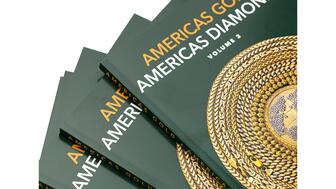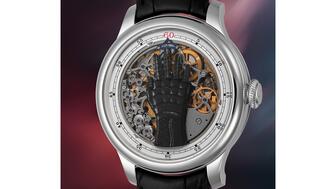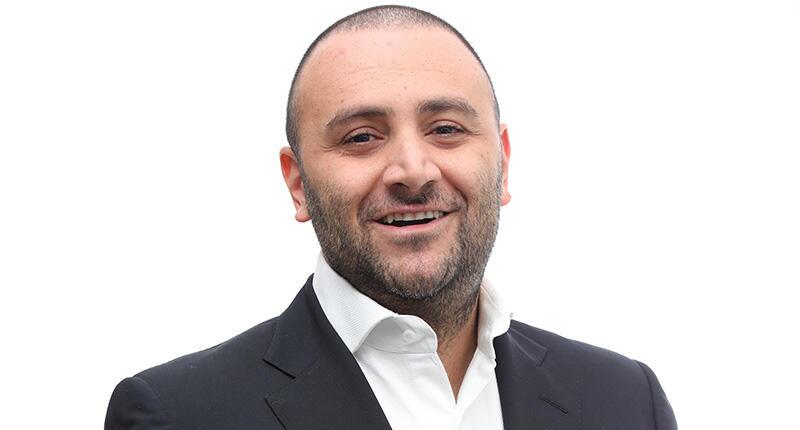Squirrel Spotting: Why Retailers Struggle to Fire Brands
Why do so many jewelers keep lines that are not selling? Peter Smith thinks the answer lies in these two behavioral principles.

This follows earlier news that De Beers Group will dissolve Forevermark in the United States and other markets and relaunch it as a diamond jewelry brand in India.
And, of course, we had last year’s announcement that Rolex is acquiring Bucherer.
These developments got me thinking about a related question, and that is, why do retailers struggle to fire brands when they no longer perform for them?
You might think such decisions would always be as simple, as the numbers are either working or they’re not.
If the sales and profitability are good for business, you keep the brand. If the metrics don’t work, you fire the brand.
How complicated is that? As it turns out, it’s pretty complicated.
In the face of declining sales, reduced margins, and unhealthy inventories, retailers continue to forge ahead with brands that once were important to them but have long since ceased to enjoy favored-partner status.
They don’t like the brand enough to cheerlead for it internally or externally but still remain indifferent enough to continue to defer on separation decisions.
Psychologists have several explanations for why this happens, but the two that stand out for me are the status quo bias, and the sunk-cost fallacy.
In the first instance, the status quo bias, we know we should make a change, but the headaches associated with doing so far outweigh the benefits of pulling the plug.
In “A New Way To Think: Your Guide to Superior Management Effectiveness,” Roger Martin wrote, “In short, research into the workings of the human brain suggests that the mind loves automaticity more than just about anything else—certainly more than engaging in conscious consideration. Given a choice, it would like to do the same thing again and again.”
There is a tendency to rationalize the status quo bias as being related to habitual loyalty; we do it because we’ve always done it, it’s easy. The reality, of course, is that it is more aptly related to inertia.
We don’t want to change because doing so means a ton of work, and we’re not looking to take on more work.
As for the principle of sunk-cost fallacy, that’s a very real thing and a powerful impediment to change.
We justify the years we’ve spent, the money we’ve invested in inventory, training, marketing, and even shop-in-shops.
We worry our team will struggle with change, when, in fact, they’re often well ahead of the principles of the business, as they’ve lived it on the front lines and have seen the decline in interest and/or effectiveness of the brand.
We also worry that customers we’ve sold a given brand to over the years will regret having purchased the brand from you if you choose to discard the line. Will they feel betrayed and take their business elsewhere?
Every restaurant that ever closed its doors has disappointed some diners. Every store that has ever closed had some fans. And every brand that was important at one time has customers who are collectors and repeat buyers.
The problem is, in all cases, there just weren’t enough of them. Things change and people move on. They are rarely as distraught as your worst fears may conjure.
In fact, one of the paradoxes of consumer behavior is that while it is commonly accepted that shoppers love automaticity, and automaticity often comes from brand consistency, we are also apt to seek out change.
In “Using Behavioral Science in Marketing: Drive Customer Action and Loyalty by Prompting Instinctive Responses,” Nancy Harhut wrote, “People are hardwired to notice things that are different from what surrounds them.”
It’s one of the reasons many retailers love to go to trade shows, to experience what’s new, and it is one of the reasons I believe quality physical retail stores will always be relevant.
Customers love the sense of excitement and discovery often delivered in the best retail environments.
As for those brands you need to address, my advice is, if you can’t bring yourself to completely sever ties, recalibrate your investment to align with the brand’s relevance to your business today, not what it used to be.
That means adjusting your inventory, your case space, and your training and marketing spend.
Block out the noise, including the noise inside your head, and do what’s right for your business.
Happy retailing!
The Latest

It purchased the “Grosse Pièce,” an ultra-complicated Audemars Piguet pocket watch from the ‘20s, for a record-breaking price at Sotheby’s.

Chandler got his start at Michelson Jewelers and has served as DCA president and CEO since 2001. He will retire at the end of the month.

Sponsored by Digital Monitoring Products

How Jewelers of America’s 20 Under 40 are leading to ensure a brighter future for the jewelry industry.

The boutique is slated to open this week inside Terminal 8, offering pre-owned Rolex watches and more to international travelers.


The lab-grown diamond grower now offers custom engagement and fashion jewelry through its Kira Custom Lab Jewelry service.

The special-edition egg pendant ingested in a New Zealand jewelry store was recovered after a six-day wait.

Roseco’s 704-page catalog showcases new lab-grown diamonds, findings, tools & more—available in print or interactive digital editions.

Associate Editor Natalie Francisco plays favorites with Piece of the Week, selecting a standout piece of jewelry from each month of 2025.

The “Love and Desire” campaign is inspired by the magic that follows when one’s heart leads the way, said the brand.

Two awardees will receive free tuition for an educational course at the Swiss lab, with flights and lodging included.

Berta de Pablos-Barbier will replace Alexander Lacik at the start of January, two months earlier than expected.

Sotheby’s held its first two jewelry sales at the Breuer building last week, and they totaled nearly $44 million.

Winners will receive free registration and lodging for its fourth annual event in Detroit.

The honorees include a notable jewelry brand, an industry veteran, and an independent retailer.

Carlos Jose Hernandez and Joshua Zuazo were sentenced to life without the possibility of parole in the 2024 murder of Hussein “Sam” Murray.

Yood will serve alongside Eduard Stefanescu, the sustainability manager for C.Hafner, a precious metals refiner in Germany.

The New Orleans jeweler is also hosting pop-up jewelry boutiques in New York City and Dallas.

Set in a Tiffany & Co. necklace, it sold for $4.2 million, the highest price and price per carat paid for a Paraíba tourmaline at auction.

The jeweler’s “Deep Freeze” display showcases its iconic jewelry designs frozen in a vintage icebox.

Take luxury gifting to new heights this holiday season with the jeweler’s showstopping 12-carat sphene ring.

This year's theme is “Unveiling the Depths of the Ocean.”

In its annual report, Pinterest noted an increase in searches for brooches, heirloom jewelry, and ‘80s luxury.

Starting Jan. 1, customers can request the service for opal, peridot, and demantoid garnet.

The 111-year-old retailer celebrated the opening of its new location in Salem, New Hampshire, which is its third store in the state.

The new catalog features its most popular chains as well as new styles.

The filmmaker’s personal F.P. Journe “FFC” prototype was the star of Phillips’ recent record-setting watch auction in New York.





























